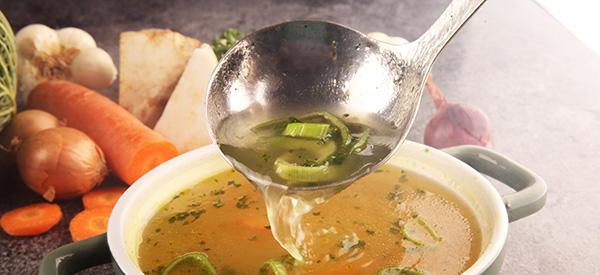
Gut-Healing Vegetable Broth
A healthy gut impacts virtually every aspect of our body by improving our immune system and supporting the health of organs such as the heart. This has important knock-on effects on our daily lives by promoting healthy sleep and a better mood.
Our gut microbiome is made up of hundreds of different types of bacteria, some necessary and good (or friendly) and others that can be detrimental to our health. For that reason, it’s important to look after your gut and keep everything working in harmony. Certain factors can contribute to gut issues such as lack of sleep, too much stress, taking antibiotics, eating processed foods, or having too much sugar in your diet.
Some signs that your gut may be in trouble include:
- An upset stomach e.g. bloating or gas
- Losing or gaining weight without changing your diet or exercise routine
- Poor sleep or insomnia
- Food intolerances
Let’s look at how to improve your gut health by making a simple but healing vegetable broth. First, I’ll explain how the different ingredients support a healthy gut and then share how to make the recipe.
Gut-Healing Properties of Vegetable Broth
I’ve used the following ingredients in this recipe: cabbage, mushrooms, carrots, garlic, miso paste, ginger, coconut oil, and turmeric.
- Gut-Healing Properties of Cabbage: Cabbage is probably one of the best-known vegetables for being gut healing. The soluble fiber it contains is great for feeding the friendly gut bacteria and the insoluble fiber helps to maintain the digestive system by promoting regular bowel movements. Cabbage is also high in L-glutamine, a building block of protein, that helps to heal the lining of the gut.
- Gut-Healing Properties of Mushrooms: Mushrooms have been used in medicinal remedies for thousands of years. In terms of gut healing, mushrooms help fight bacteria which helps to keep a healthy microbiome. They are also good prebiotics that stimulates probiotics in the gut.
- Gut-Healing Properties of Carrots: Carrots contain pectin which is a soluble fiber. This slows down your digestion of starch and sugar. It also feeds the good bacteria in your gut helping your gut cells to stay healthy. Consuming carrots regularly can even prevent the formation of a gastric ulcer and other digestive issues.
- Gut-Healing Properties of Garlic: Garlic has been used in medicine for over 5,000 years and it is a superfood on many levels but is especially good for the gut. That’s partly because garlic is high in a non-digestible carbohydrate called inulin that feeds good bacteria in the gut. This helps your gut function better overall and stops the growth of disease-promoting bacteria.
- Gut-Healing Properties of Miso Paste: Miso paste is made from fermented soybeans making it full of probiotics that improve your gut health. One particular probiotic in miso paste, Aspergillus Oryzae, naturally helps maintain a good-bad bacteria balance.
- Gut-Healing Properties of Ginger: Ginger has a calming effect on the stomach and has gut-healing properties. It also aids digestion and stops food from sitting and fermenting in the intestine by helping your gut move it along. Ginger has over 100 bioactive compounds with anti-inflammatory, antioxidant, and antiemetic properties and it’s many of these that aid digestion. It also stimulates digestive acids and supports the absorption of nutrients.
- Gut-Healing Properties of Coconut Oil: Coconut oil helps to absorb the other nutrients in this broth and also has properties that destroy bad bacteria and lower stomach acid. It also works to restore a healthy balance when there is an imbalance in the gut.
- Gut-Healing Properties of Turmeric: Turmeric has long been used to treat digestive issues in ayurvedic medicine. Turmeric is beneficial to the gut in several ways: it helps the stomach lining, promotes the growth of good gut bacteria, and can prevent bloating or gas while food is being digested.
However, turmeric does negatively affect some people’s digestion, especially where they already have issues. If you know that turmeric doesn’t sit well in your stomach then leave this ingredient out of the broth.
How to Make This Gut-Healing Vegetable Broth
This is a very simple recipe to prepare and should only take five minutes or less. It will then take one hour to cook, roughly 20 minutes to cool, then you need to strain it at the end. You should take this three times a day if you are experiencing gut problems or once a day or every few days if you are looking to maintain your gut health. You can make larger batches if you are going to be taking this regularly to save yourself time. If you divide the quantities below into four serving sizes each portion will have approximately 40 calories.
Ingredients
- 4 Cloves of garlic
 1 inch knob of ginger
1 inch knob of ginger- 6 Mushrooms
- 10 oz. (250 grams) of cabbage
- 4 Carrots
- A Pinch of black pepper
- 1 Teaspoon of ground turmeric
- 1 Tablespoon of organic virgin coconut oil
- 1 Tablespoon of miso paste
- 8 Cups of filtered water

Utensils
- Large pot
- Chopping board
- Sharp knife
- Strainer
- Large bowl
Method
- Slice 10 oz. of cabbage up into strips and place them in your pot.

- Cut 4 carrots and 6 mushrooms into quarters and add them to your pot.

- Bruise 4 garlic cloves with the side of a knife then throw these in.
- Roughly chop your piece of ginger (you can leave the skin on if it’s organic, otherwise peel it first) then add this too.

- Add 1 tablespoon of coconut oil, 1 teaspoon of ground turmeric, and a pinch of black pepper.
 Cover all of your vegetables with water (about 8 cups) and put the lid on your pot.
Cover all of your vegetables with water (about 8 cups) and put the lid on your pot.- Bring it to a boil then turn down the heat so the water is simmering and leave it for 1 hour.

- Take it off the heat and allow it to cool somewhat before the next step so you aren’t dealing with hot liquid.
- Wait until the soup has been taken off the heat and then stir or whisk in the miso paste. It will melt into the soup thanks to the residual heat of the stock
 ***Miso is a fermented food, meaning it contains live, active cultures of bacteria. Adding it to boiling water will kill the probiotics in the miso, nixing the health benefits it typically offers, like better digestive health.
***Miso is a fermented food, meaning it contains live, active cultures of bacteria. Adding it to boiling water will kill the probiotics in the miso, nixing the health benefits it typically offers, like better digestive health.
- Strain the liquid into a large bowl.
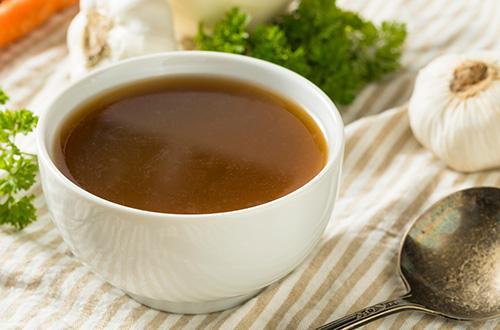 You can take some straight away or put it in the fridge. It will also keep in the freezer for a couple of months if you store it in airtight containers.
You can take some straight away or put it in the fridge. It will also keep in the freezer for a couple of months if you store it in airtight containers.
Takeaway:
The gut microbiome is host to an abundance of intestinal flora that can make (or break) your physical and mental health depending on if it is balanced. From immunity to nutrient absorption, anxiety and depression to weight loss, the gut microflora plays a crucial role in our overall well-being. Many don’t give a second thought to gut health until an issue develops. However, this is a mistake. If you would like to truly thrive, caring for your gut should be a top priority. And one of the best ways to do this is through diet and medicinal herbs.
Ready to heal and fertilize your gut for optimal health? You can also visit the apothecary today and learn more about the Balanced/Leaky Gut Tincture.
You may also like:
 10 Easy Ways to Improve Your Gut Health
10 Easy Ways to Improve Your Gut Health








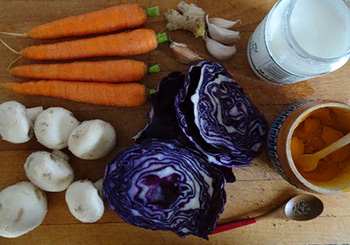 1 inch knob of ginger
1 inch knob of ginger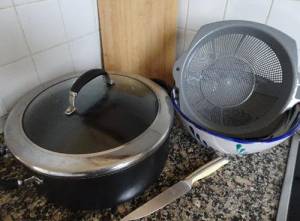
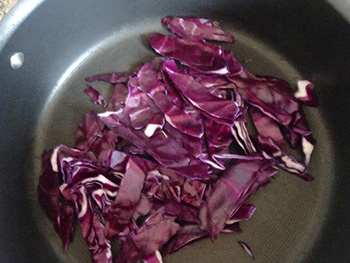
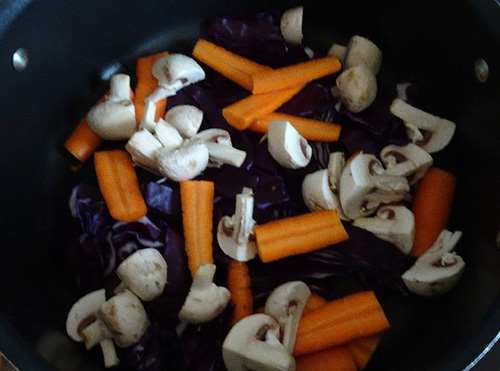
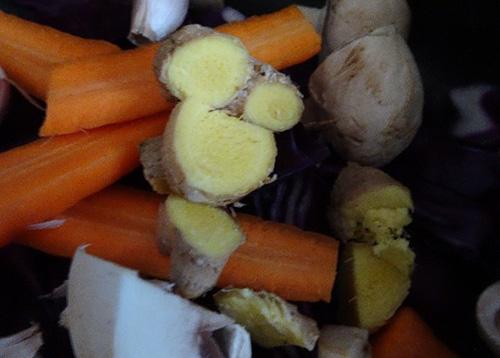
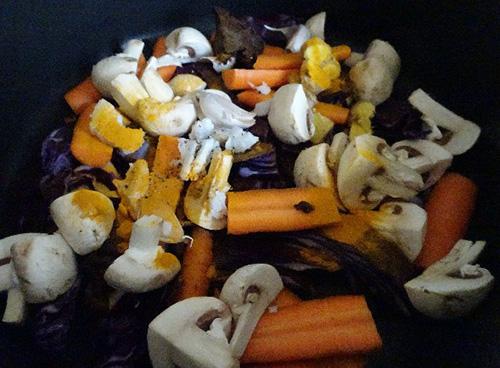 Cover all of your vegetables with water (about 8 cups) and put the lid on your pot.
Cover all of your vegetables with water (about 8 cups) and put the lid on your pot.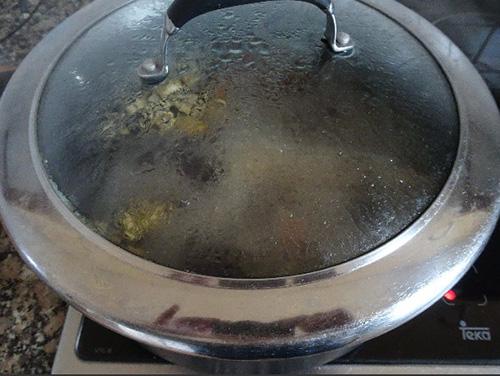
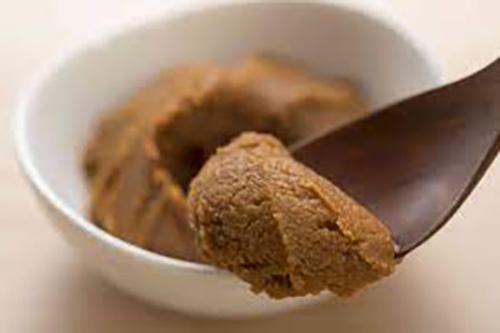 ***Miso is a fermented food, meaning it contains live, active cultures of bacteria. Adding it to boiling water will kill the probiotics in the miso, nixing the health benefits it typically offers, like better digestive health.
***Miso is a fermented food, meaning it contains live, active cultures of bacteria. Adding it to boiling water will kill the probiotics in the miso, nixing the health benefits it typically offers, like better digestive health.
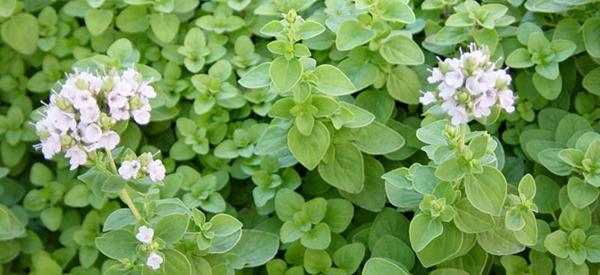
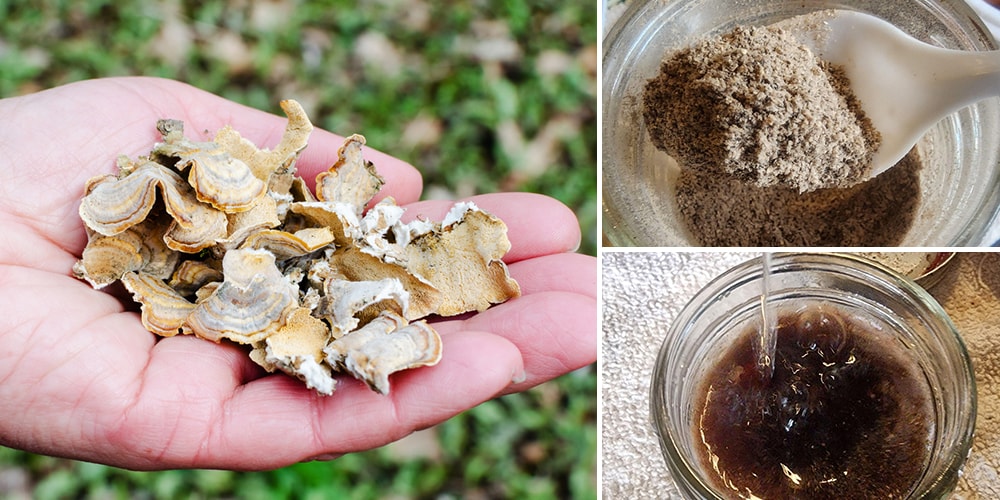
Can I use powdered ginger?
Hi Carmine,
Yes, you can use ground ginger as well.
Be aware that it has a much more concentrated flavor than fresh ginger, so you will need to use less of it. The exact ratio of how much ginger powder to use in place of fresh ginger depends on both your preference as well as the potency, age, and quality of the spice itself.
To be safe, start with 1 teaspoon of ground ginger for a 1-inch piece of fresh ginger and you can gradually add more.
I hope this helps!
Why not eat the veggies in it as well?
Hi Linda,
The left over vegetables from the broth will no longer be very tasty. After boiling them, they will be stripped of their normal taste and some nutrition.
That doesn’t mean that you should just throw them in the garbage. There are some creative things that you can do with them, like:
– Vegetable balls – these will require some type of bread crumbs or panko chips, flour, herbs.
– Dumplings – use the veggies as the inside of the dumpling mix.
– Bruschetta – create some type of spread using the veggies that can be added to crackers or bread or used as a dip!
Many blessings and good health!
There is evidence that broth, without any other food in it, is is healing to the stomach and intestines. That is why broth is indicated in many sickness recipes as it heals and repairs. Digestion is also mostly eliminated, adding more benefits to healing. Broth give nutrients without the added strain on the system from other foods.
I would eat the veggies too, because if the flavor is in the broth then the texture, roughage is in the veg.
As the mothers in my lineage say: “Waste not any useable/edible parts.”
From the standpoint of healing, solids of any type are not recommended and typically are not tolerated by the patient.
I have Napa cabbage on hand. Would that provide similar benefits ( minus the anthocyanins) for the gut as the red cabbage shown?
I don’t do any soy products, is there something else to use instead of it?
Fermented soy, in small amounts is not bad for you. Miso is fermented. I also do not use soy in most cases, however, miso has other health benefits, which I will use on rare occassions.
Carol, for some of us this is not a case of “a little bit won’t hurt”—even a tad bit of soy will set off an allergic or gluten reaction. There is a miso out there that is fermented from chickpeas which very likely would provide health benefits similar to soy miso. One very good brand is from http://www.southrivermiso.com
Hi Charlotte,
While both green and red cabbage are extremely healthy, the red variety has a greater nutrient profile.
Napa cabbage tastes excellent raw as the base of a salad, especially because its leaves are sturdy enough that they won’t wilt when mixed with dressing. So it might not be very common to use Napa cabbage for a vegetable broth, but there is nothing wrong with it. Napa cabbage is also packed with a lot of nutrients and is a natural way to reduce inflammation.
Many blessings and good health!
Won’t boiling kill any nutritional value ?
i am so sensitive to soy that I can’t eat any foods that are processed in the same plant facility.
Thank you for the link to chickpea miso
I asked a local farmer and he suggested using the red cabbage as Napa cabbage is not as nutrient dense.
Can I use any kind of cabbage?
Hi Yolene,
You can use any kind of cabbage but just keep in mind that while both green and red cabbage are extremely healthy, the red variety has a greater nutrient profile.
Many blessings and good health!
Not all miso has live probiotic bacteria in it because it has been pasteurized to be shelf stable number one. Number two if you do have live miso boiling it will kill all of the good live probiotic bacteria. Number three if you’re using live miso and you want to maintain the live probiotics do not add the miso till after the broth has cooked and it’s taken off the burner and no longer boiling and has cooled a bit.
Good to know Marie, I love veg broth so I’m thrilled with that advice !
It’s said that in the ingredients above already!
After I made the broth, the next day after taking it out of the fridge, the coconut oil was floating on top in little specs. So, is it ok to heat it up a little? Not to boiling. Plus it tastes better warm.
I thought aspergillus was a dangerous fungus, especially for people with autoimmune issues. Am I wrong???
I have heard the same thing also and that is what I was wondering when I read that.
Thank you for the recipe!
What is a serving size?
Hi, I was wondering the same, but the recipe said divide it into four parts…so that is the answer it seems
What sort of Mushroom?
Hi Eva,
The mushrooms used in this recipe are the White Button Mushrooms.
Each type of mushroom is said to have its own unique medicinal properties. The mushrooms that you find in your grocery store may not be considered medicinal, but they still have a lot to offer. Cremini, portobello, button, and oyster mushrooms are all rich in vitamins and minerals. And making broth is a simple way to absorb the many nutrients that mushrooms have to offer.
Many blessings and good health!
Is there something else I can use other than miso paste. I have to avoid any type of soy products in my diet
Check out South River Miso online. They have some amazingly delicious non-soy miso options.
Thank you for this tip!
Read the comments , one mentions MISO and the way to use it. I personally did not use it. So happy I didn’t waste money buying it!
Where can I buy live miso?
I wll prepare this soup for my gut problems. a side question, I am making my own milk kefir, in your opinion do you think is kefir good for the gut flora. Thank you
Hi Marcella,
Yes, definitely.
Certain dairy products, such as aged cheeses, kefir, uncultured buttermilk, and yogurt, are excellent sources of probiotics, and probiotics, in general, are good for a healthy balance of gut bacteria.
You can find more details in the article below:
https://thelostherbs.com/eat-this-to-fertilize-your-gut/
Many blessings and good health!
This sounds great! The only issue I see is that you should never boil miso, it kills the live probiotics( not sure if thats the right word, but it does kill the live cultures/probiotics. ) It should be added after the soup is removed from the heat by first adding a small amount of the broth with the tablespoon of miso in a separate small bowl, mix well. Add it in after it stops boiling and cools a little bit. In this case I would add it after its strained. Bon Appetit!
You are a blessing! Thank you for taking the time to share this! I am so happy I didn’t spend money buying this (hard to find in my stores)
Hi Barbara,
Thank you so much for pointing this out.
Your feedback is very important to us. It means that we can better understand what we are doing well, and.. what we don’t.
I already communicated this to the author and we modified the recipe accordingly.
Many blessings and good health!
It clearly says in the recipe above to add Miso after it cools!!
Question! Once the liquid is strained does it need to stay in a liquid form or could I make rice with it? Also,
If you make rice with it, you will be reheating it and destroying the effects of the miso, which must be added to the broth after it has cooled.
I am allergic to coconut oil,,, suggestion on subsitute?
Hi Judith,
Any neutral flavor, vegetable oil is most similar to coconut oil because it’s plant-based and often doesn’t change the way the recipe tastes. For example, you can use avocado oil, grapeseed oil, vegetable oil, and sunflower oil.
Many blessings and good health!
A healthy oil you’re not allergic to! 🤷♀️
Great! Already made some – Suggested serving size?
Hi Olivia,
If you’re working to improve your gut health, we’d recommend drinking at least 3 cups of broth a day, ideally with the first being on an empty stomach in the morning.
Many blessings and good health!
After the initial 3 cups a day(for how many days?), how much should you take thereafter to maintain?
by heating it up you dont lose the living parts like the probiotica. If i process everything in a slow juicer do i optain more of the benefits nitrient. Freeze the liquid in ice cubs and defrost it overnight and drink it in the morning. Is that also an option?
To get ultimate benefit, heating gently is fine, boiling is not.l, as per Michio Kushi, the foremost authority on Macrobiotics and the founder of 2 internationally acclaimed educational organizations, The Kushi Institute and the East West Foundation. Sorry but I don’t know anything about freezing it.
This is delicious! My body really likes this. Is this recipe in The Lost Herbs book? Thank you!
My body liked it, too! 👍🏼
You had a ad about using 1/4 of a teaspoon in coffee. I would like to know if you put it into your first cup it in the pot of coffee ?
Sorry I didn’t put that is was baking soda !
Where on earth can I purchase these items because I would love to be able to use them. I live i South Mississippi on the coast and finding a supply of these items is useless. I have your books, but I cannot find the items I need.
Health food stores, Whole Foods through Amazon prime, you can also ask for it at your grocery store, you never know they may get it for you. The brand I have is Miso Master Organic – American Miso Co. Http:// great-eastern-sun.com or South River Brand – Conway,MA.
Made this and it’s delicious! I am going to add additional miso as I saw in previous comments that you shouldn’t boil it.
Can you use any cabbage?
Hi Bobbie,
You can use any kind of cabbage but just keep in mind that while both green and red cabbage are extremely healthy, the red variety has a greater nutrient profile.
Many blessings and good health!
I made this even though I am not experiencing gut problems. I failed to see the red cabbage or subconsciously ignored it. I also could not find MISO so I skipped it. I was curious about eating the ingredients but had so much other delicious foods, I just threw it out. Thanks for the recipe.
If you know someone with chickens … they loved it!
It’s states to take this three times a day, or once a day or every few days if you are looking to maintain your gut health. What would a serving size be? 4 oz?
Hi Pamela,
The author states that if you divide the quantities in this recipe into four serving sizes each portion will have approximately 40 calories.
A cup of broth contains one cup (8 ounces ).
A bowl is 1.5 cups ( 12 ounces ).
If you’re working to improve your gut health, we’d recommend drinking at least 3 cups of broth a day. Now depends on you, if you just want to have a bigger bowl of broth at lunch or divide it into smaller cups throughout the day.
Many blessings and good health!
Can this be used as some type of cleanse?
Hi Chrissy,
I’m deathly allergic to miso paste! Is there an alternative I can use? Will the broth still have effectual benefits if I just leave the miso out?
Thank you
Hi,
I have Hashimoto Disease and I’m not supposed to have soy. Is there a substitute for the miso paste or is soy different once it’s been fermented? Thanks
Is this broth ok when my colitis is active
Hi thank you for a great recipe, can I add the miso by blending on low in a Vitamix to incorporate into the broth.
Was wondering how much to drink to help lose weight?
Thank you very much for recipe.,do you have a similar for weight loss
My wife has already been diagnosed with an allergy to soy, if I leave the Miso out will it still be effective??
Hi I am new to this and so excited to start my journey for better health. I was wondering if you have a recipe for bone broth as I heard it is also healthy for your gut and because it contains collagen it is good for recovery from strain, sprains and ligament injuries which I am suffering from. Thank you in advance.
Why red cabbage?
Is white also good?
Hello,
I know it says if you boil the broth it will kill the Miso but what if your making extra? Would you be able to warm it up without boiling it and not kill the miso?
How do you store it and reheat it without killing the live probiotics?
Can the veggies be reused for another batch of broth? How long should this be drinking to cleanse your gut?
Hi, could I substitute fresh grated turmeric root for ground turmeric?
Thanks
If you are planning on making a large amount of this delicious soup, I would add the miso paste individually to each portion that you’re planning to eat after reheating it . Because if you put the miso in the big pot of soup after letting it cool a bit that’s okay if you eat it all . But if you’re planning on reheating the soup, it is probably best not to put the miso in the big pot but to add a small amount of miso to your individual serving before you are planning on eating it so the enzymes in the miso to not get destroyed by reheating. Especially if you are going to heat the soup up in the microwave..
I have Hashimotos, I can have No dairy, no eggs, No cruciferous veg, no turmeric , No Gluten. No Alcohol, I have psoriasis.
Love to see what recipes you can make for me. 🤗🤗. Regards Linda K
I would like to make a large batch of this. My question is, can I can this broth like other broths, if so, is it water bath or pressure canning. Do I need to add lemon juice to it for the acid base. Thanks
I would eat the soup as is without straining. Be a really good soup to have some homemade bread with too.
Would any benefits be lost doing this in an instapot, up until adding the miso?
I forgot to add the miso
Looking forward to trying. I suppose you have to gently heat leftovers on the stove because the microwave would kill the probiotics?
I’m going to try this in my instant pot.